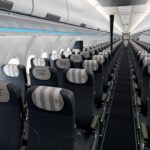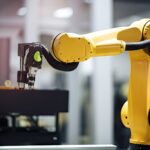Firefly Aerospace, an end-to-end space transportation company, has held an official ribbon cutting in celebration of the company’s Rocket Ranch expansion in Briggs, Texas.
Firefly more than doubled the size of its manufacturing facilities, added two new test stands, and installed state-of-the-art machinery to support the production of Northrop Grumman’s Antares 330 and the Medium Launch Vehicle (MLV) the companies are co-developing together.
Firefly’s expanded manufacturing space from 92,000 to 207,000 square feet includes two new large-scale buildings for rocket production, assembly, and integration.
The company also built a new higher thrust engine stand to test Firefly’s Miranda and Vira engines with up to 230,000 pounds of thrust and five times the load capacity as Firefly’s current Reaver and Lightning engine stand.
Designed to accommodate three engine bays as production cadence increases, the new stand provides redundant, high accuracy thrust and mass flow rate data to further improve mission assurance.
The expansion also includes a new 100-foot structural test stand to conduct pressurized axial loading to mimic flight loads. In total, Firefly now has six test stands at its Briggs location to support the robust testing performed across all vehicle lines.
“After Firefly signed the MLV agreement with Northrop Grumman, we went immediately to work on our Briggs expansion, which has been completed in less than a year’s time,” said Bill Weber, CEO of Firefly Aerospace.
“Along with the expansion, we’re taking advantage of automated machinery to further advance our rapid production schedule while improving efficiencies and lowering costs.”
Firefly is utilising a new automated fiber placement (AFP) machine, sourced from Ingersoll Machine Tools Inc., a brand of Camozzi Group’s Machine Tool Division, to rapidly fabricate the carbon composite structures, including barrels, domes, and other composite structures for the first stage of Antares 330 and both stages of MLV. Now operational, the AFP machine was recently used to build Firefly’s first carbon composite barrel for MLV development testing.
“Firefly’s new AFP machinery, which is already widely used and proven in the aircraft industry, is a significantly more efficient and cost-effective approach to rocket production and can be utilised for composite parts across our vehicle lines,” said Dan Fermon, COO of Firefly Aerospace.
“These high-speed robotic machines can lay up more than 200 pounds of carbon fibre per hour, allowing us to produce all the large carbon composite structures for Alpha in just seven days and MLV in just 30 days. This is about nine times faster and seven times cheaper than our former process using high-touch laser placement systems.”
Subscribe to the FINN weekly newsletter

